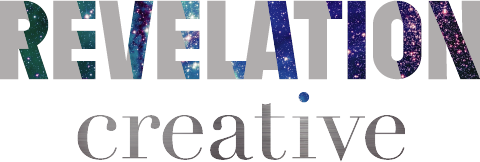When it comes to your next marketing project, you want to be sure you’re getting the right team and the right price for your needs and budget.
In another recent blog, we talked about the key things to consider before you engage with an agency.
But, did you know that small- and mid-sized businesses can put out a document that casts a wide net to different agencies?
This wide-net approach allows agencies to respond to the RFP and engage with you more effectively, because your RFP outlines your expectations, goals, and needs in specific terms.
From marketing companies to federal agencies, many organizations use request for proposal (RFP) processes to ensure they get what they need and the experience they have in doing so is comprehensive and streamlined.
Today, we’re going to give you a rundown of some key things to include in your RFP to give you the best chance of getting high-quality, well-suited responses from an array of agencies.
What Is A Request For Proposal?
A request for proposal (RFP) is a document and process that shares your project, explains it, and requests bids from potential vendors or contractors to complete that project for you.
By soliciting responses from several agencies at once, you make your process of finding the right team for your project even faster. When it comes to technical, advertising, marketing, and related areas, an RFP also helps you get potential vendors to see if they have the particular expertise you need to make your project a success.
And your project stands to become more affordable than if you went out to find a single firm to take it on because vendors are now situated to compete for the opportunity to work with you.
What Makes An RFP Successful?
While you’ll find our must-have list of things to include in your RFP below, there is something that makes some RFPs more successful than others: Specificity.
The more specific you are with your project description, your expectation, and exactly what you’re truly asking for, the higher the chances are that the proposals you receive will be ones that you want and that will ultimately allow your vendors to deliver on what you desire.
What You Should Put In Your Request For Proposal (RFP)?
While RFPs can vary in their contents, the Revelation Creative Team suggests including these key pieces of information, as they help marketing agencies discern if they will be a great fit for your project and they help you do the same.
Share About You, Who You Serve, And How You Do So

This gives potential vendors a clear and concise idea of who they’d be engaging with. It also helps them get a sense of your brand, how you operate, and what you value as an entrepreneur or organization.
Explain The Project You Are Proposing
While an obvious piece of an RFP, the key here is the elevated level of specificity. Describing the project in detail both in scope and technical needs allows potential collaborators to decide if they are the best fit for the types of things you’ll need to have done during the course of your project.
For example, if a firm that specializes in social media marketing and paid ads sees your RFP includes a full website overhaul, they may decide that, while they can do the job, it’s not the best fit possible for either party.
On the other side of the coin, if an agency with comprehensive website and marketing experience, like Revelation Creative, sees your RFP for a full website build, they’ll be excited to submit a proposal because they can make your project a booming success.
Let Them Know The Budget
This is a key piece of your RFP and is something you should make very clear in your document. The agencies that submit proposals will then understand not only the scope but the financial compensation they can expect for the project.
State Your Ideal Timeline
This piece allows agencies to begin clarifying potential dates to reach particular milestones within the scope of your project. It will also give them a sense of whether your timeline works with the current workload they have in their business, making sure all parties have the bandwidth to accommodate the project.
Offer Ideas For Existing Technologies And Platforms You’d Like To Use
This piece can feel a bit confusing. If you don’t have a great deal of experience with the technical side of marketing, you may not feel equipped to add in potential platforms or technologies when creating a request for proposals.
However, if you know some of the things you currently use (Your CRM, email marketing service, landing page integrator, social media platforms, or website platform) this information can be helpful to include.
You can also let vendors know if you’re open to suggestions or if some technologies are non-negotiable.
Define Quantifiable Metrics For Tracking Key Performance Indicators

What does a successfully completed project look like? How will you measure progress? How will you measure results?
Answering these questions ahead of time helps everyone involved to fully understand what a successful collaboration would look like.
Ask Questions
If you’re wondering if the agencies you’re requesting proposals from have suggestions for improving your project in scope or approach, just ask.
You’ll get clarity on the things that you’re curious about, and the answers you receive will further evidence whether an organization is knowledgeable, trustworthy, and the right fit for your needs.
Tell Them How To Submit Their Proposal
Be sure to set up a system for receiving and responding to proposals as they come in. This includes establishing a deadline for receipt and detailing a tentative decision date for your response.
Whether you want a form completed, an email delivered, or have another approach that you’d prefer, make this clear in your RFP.
We’d suggest having one way to receive proposals so that you keep everything streamlined and can more quickly find your right-fit agency.
Want To Learn More About Beginning Your Project With An Agency?
Let’s connect.
If you’d like Revelation Creative to submit an RFP for your next project, you can contact us here to get started.
